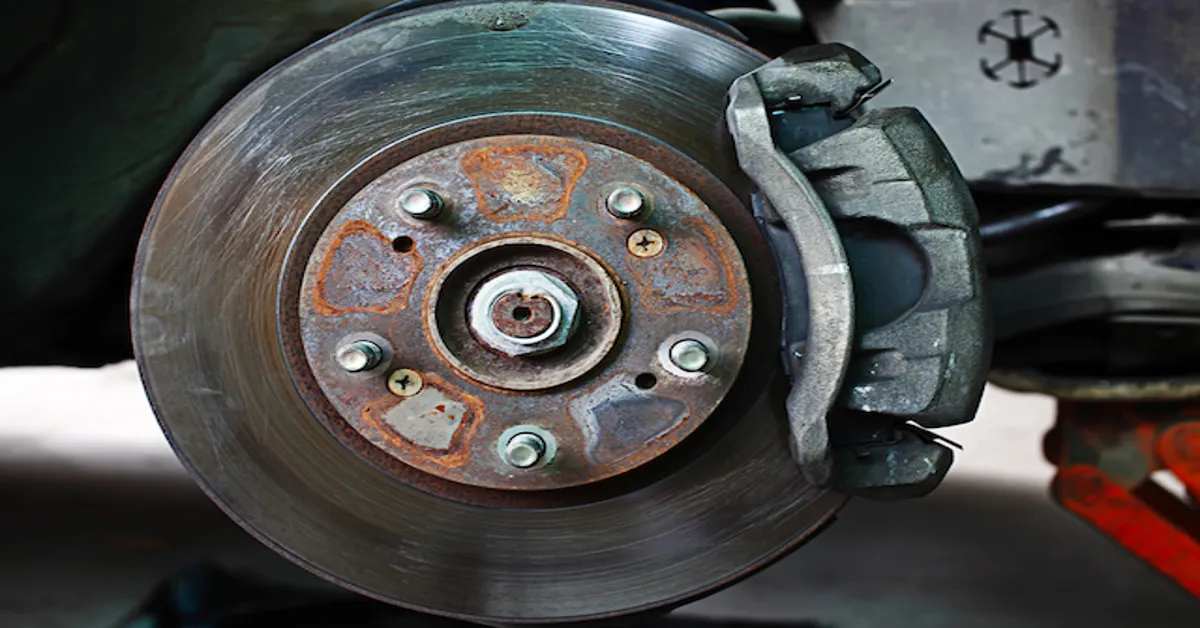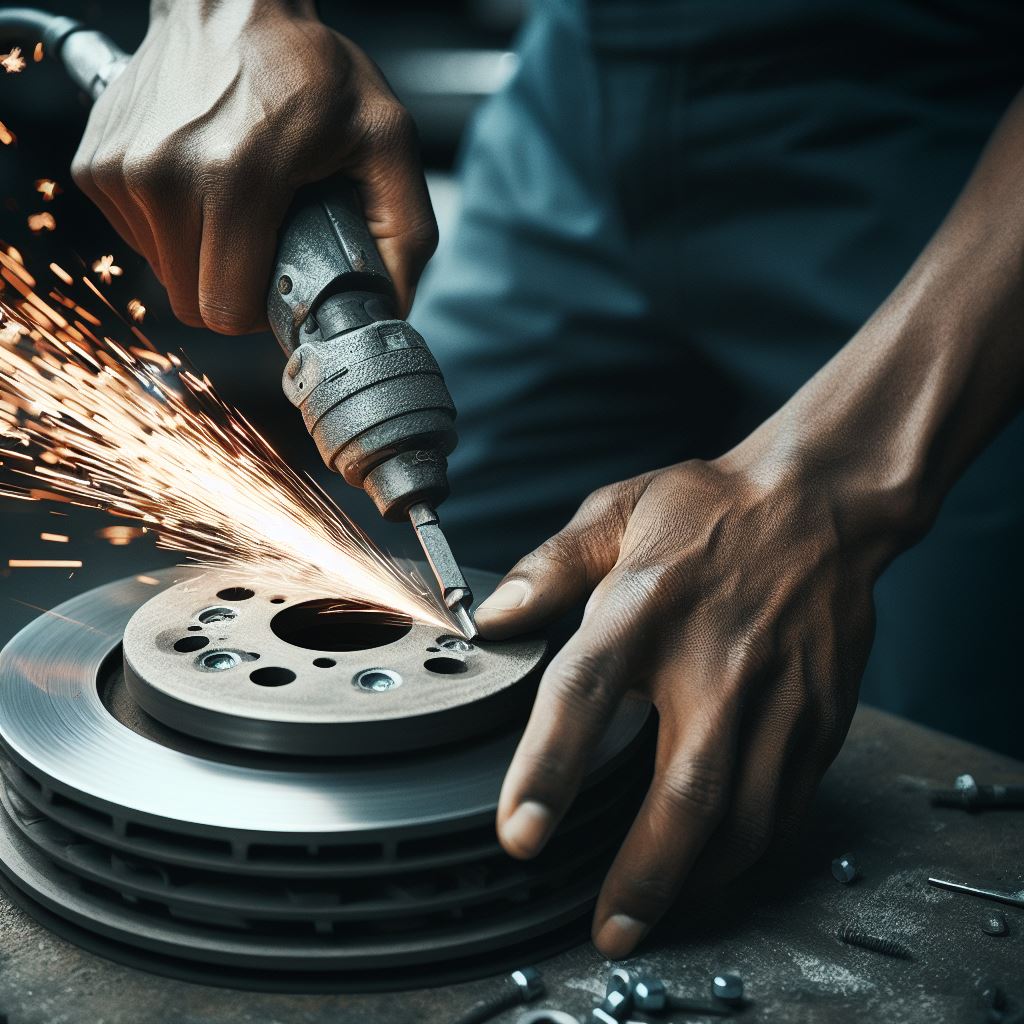As car owners, we all dread the dreaded “warped rotor” diagnosis from our mechanic. It’s a problem that can cause annoying vibrations, uneven braking, and even lead to dangerous situations on the road. But how can you tell if your rotor is actually warped or if it’s just a minor issue that can be easily fixed? In this blog, we’ll dive into the world of rotor warping and give you some tips on how to tell if your rotor is truly warped.
So buckle up and get ready to learn how to spot this pesky problem before it becomes a major headache.
Key Takeaway
- Warped rotors can cause vibrations, uneven braking, and even be dangerous on the road.
- One way to tell if your rotor is warped is to pay attention to how your car feels when braking.
- If your car shakes or pulls to one side when braking, it could be a sign of a warped rotor.
- Another way to tell is by inspecting the rotor for any visible damage or irregularities.
- If you suspect your rotor is warped, it’s important to get it checked and repaired by a mechanic to ensure safe driving.
One of the most common problems with car brakes is warped rotors. This can cause a pulsating feeling in the brake pedal or steering wheel when you apply the brakes. But how do you know which rotor is actually causing the issue? Here are some tips to help you identify the warped rotor.
First, park your car on a flat and level surface. Then, start the engine and slowly drive the car up to 30mph. Apply the brakes firmly and pay attention to the steering wheel and brake pedal.
If you feel a pulsating sensation, it means one of the rotors is warped. Next, lift the car and remove the wheels. Use a flashlight to inspect the rotors.
Look for any visible signs of damage such as cracks, grooves, or uneven wear. If one rotor appears to be more damaged than the other, it is likely the culprit. Another way to tell which rotor is warped is by using a dial indicator.
This tool measures the runout of the rotor, which is the amount that the rotor deviates from a perfect circle. Place the indicator on the rotor and spin it by hand. If the runout is significantly higher on one rotor compared to the other, then that rotor is likely warped.
You can also check the temperature of the rotors after driving. Warped rotors tend to heat up faster and retain more heat than the non-warped ones. Use a laser thermometer to measure the temperature of the rotors after driving.

What is a Warped Rotor?
When it comes to braking issues, one common problem is a warped rotor. This can cause uneven braking, vibrations, and even noises. But how do you tell which rotor is warped? Don’t worry, we’ve got you covered! What is a warped rotor? Before we dive into how to identify a warped rotor, let’s first understand what it is.
A rotor is an essential part of the braking system in a vehicle. It is a round metal disc that rotates along with the wheel and is responsible for creating the friction that slows down and stops your vehicle. A warped rotor is when this disc is no longer perfectly flat, causing it to vibrate or wobble when the brakes are applied.
Signs of a warped rotor There are a few tell-tale signs that can indicate a warped rotor. The most obvious one is vibrations when you apply the brakes. This can be felt through the steering wheel, brake pedal, or even the entire vehicle.
Another sign is uneven braking, where one wheel seems to brake harder than the others. You may also notice squeaking or grinding noises when braking, which can be a result of the uneven surface of a warped rotor. How to identify which rotor is warped To identify which rotor is warped, you can perform a simple test.
Start by safely jacking up your vehicle and removing the wheels. Then, spin the rotors by hand and observe their movement. If one rotor appears to be wobbling or has uneven movement, it is likely the one that is warped.
You can also use a dial indicator tool to measure the rotor’s runout, which is the amount of deviation from a perfect circle. Conclusion A warped rotor can affect your vehicle’s performance and safety, so it’s essential to identify and fix the issue as soon as possible. By paying attention to the signs and performing a simple test, you can easily tell which rotor is warped.
Common Signs of a Warped Rotor
Rotors are an essential component of your vehicle’s braking system. They work together with the brake pads to slow down and stop your car. Over time, rotors can become warped due to constant use and exposure to high temperatures.
This can cause your car to vibrate, pull to one side, or make a grinding noise when braking. If you suspect that your rotors are warped, here are a few ways to tell which rotor is causing the issue: Visual Inspection: The first step is to visually inspect the rotors.
Park your car on a level surface and take a look at the rotors. If you notice any visible damage, such as cracks or deep grooves, it is a sign that the rotor is warped.
Measure the Thickness: Use a micrometer to measure the thickness of the rotors. A warped rotor will have uneven thickness measurements, with one side being thicker than the other.
Check for Lateral Runout: Lateral runout is the side-to-side movement of the rotor. This can be checked using a dial indicator. Place the indicator on the rotor and spin the wheel.
If the rotor has excessive lateral runout, it is likely that it is warped.
Perform a Road Test: Take your car for a test drive and pay attention to how it feels when braking.
How to Identify Which Rotor is Warped
When it comes to your vehicle’s braking system, one of the most common issues is a warped rotor. This can cause your car to vibrate or shake when you apply the brakes, making for a less-than-smooth ride. But how can you tell which rotor is causing the problem? Here’s a guide to help you identify the culprit.
First, let’s understand what a rotor is. A rotor is a metal disc that is attached to the wheel hub and rotates along with the wheel. When you press the brake pedal, the brake pads squeeze onto the rotors, creating friction and slowing down the vehicle.
Now, to determine which rotor is warped, follow these steps: Find a flat and level surface to park your car on. This could be your driveway or a parking lot.
Start the engine and let it warm up for a few minutes. This will ensure that the brakes are at their normal operating temperature.
Put your car in neutral and release the parking brake.
Slowly drive the car up to a speed of about 40-50 mph. Apply the brakes gently and pay attention to the steering wheel.
Important Notice for readers
Dear readers, We want to bring your attention to a common issue that many car owners face – warped rotors. If you have been experiencing vibrations or pulsating sensations while braking, it is likely that your rotors are warped. This can be caused by excessive heat, wear and tear, or improper installation.
To check if your rotors are indeed warped, simply spin each wheel while the car is lifted and observe for any wobbling or uneven movement. If you notice this, it is important to get your rotors checked and replaced, if necessary, as it can affect the safety and performance of your vehicle. Don’t let warped rotors compromise your driving experience.
Frequently Asked Questions (FAQs)
How can I tell if my car’s rotor is warped?
One way to tell if your rotor is warped is by paying attention to the steering wheel. If you feel a vibration or shaking while braking, it could be a sign of a warped rotor.
Are there any visual signs of a warped rotor?
Yes, you can also visually inspect your rotor for any signs of warping. Look for uneven wear patterns or grooves on the surface of the rotor.
Can a warped rotor cause any other issues with my car?
Yes, a warped rotor can cause your car to pull to one side while braking, decrease braking efficiency, and even cause excessive heat buildup in the braking system.
How did my rotor become warped in the first place?
Rotors can become warped due to excessive heat, aggressive driving, or uneven torque when tightening the lug nuts. It’s important to properly maintain your braking system to prevent warping.
Conclusion
It is important to understand the signs of a warped rotor to ensure safe driving. Look out for vibrations in the steering wheel or brake pedal, uneven brake pad wear, or a pulsating feeling when braking. These are key indications of a warped rotor and should be addressed immediately to prevent further damage to your vehicle and ensure your safety on the road.

Leave a Reply